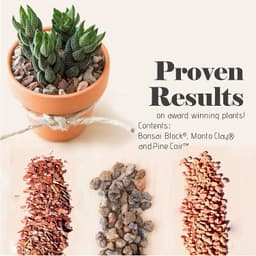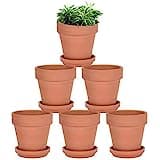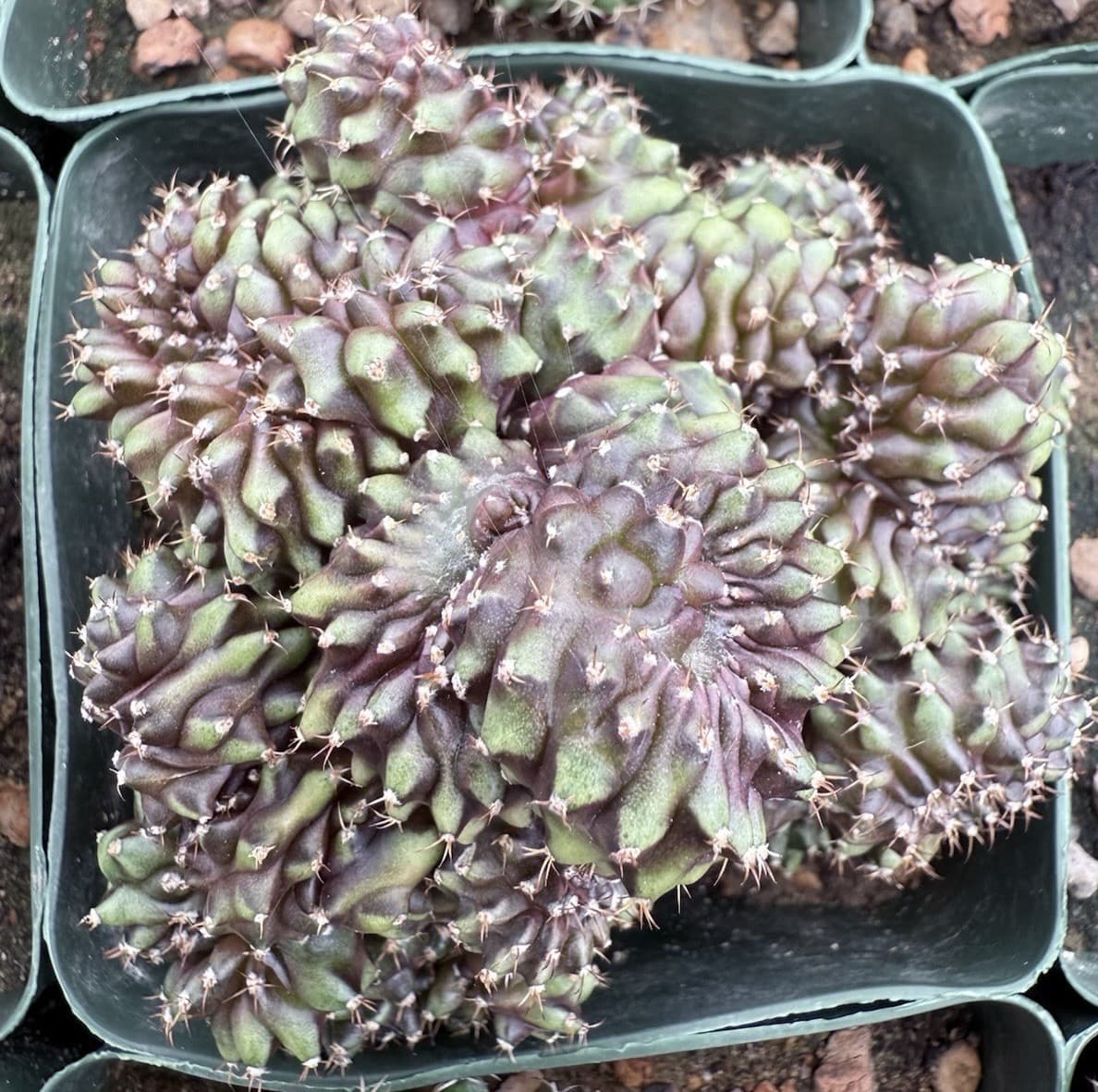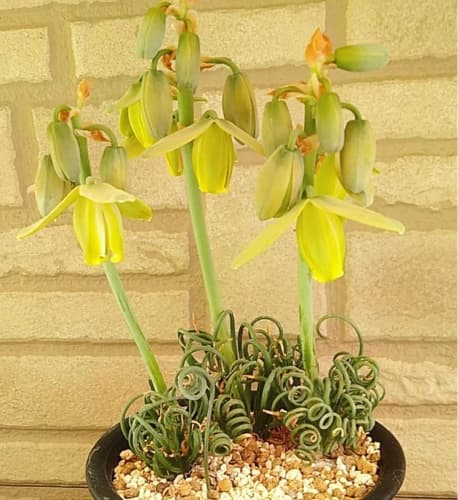Greenovia Dodrantalis (Mountain Rose)
Posted by Grace on April 24, 2023
Are you a lover of succulents and roses? If so, have you ever heard of Greenovia Dodrantalis, also known as Mountain Rose or Monte Rosa? This unique and stunning plant combines the best of both worlds, with rosettes of soft, velvety leaves that resemble rose petals. Its striking appearance has captured the hearts of succulent enthusiasts and rose lovers alike, making it a must-have addition to any plant collection.
In this article, we'll dive into everything you need to know about caring for Greenovia Dodrantalis, from its unique appearance to its preferred growing conditions. So, whether you're a seasoned succulent collector or a beginner looking to add some beauty to your home, keep reading to discover the wonder of Greenovia Dodrantalis.
Aeonium aureum, commonly known as Greenovia Dodrantalis and Mountain Rose, is a species of succulent plant in the family Crassulaceae.
Need tools for succulent propagation and repotting? Here are my go-to tools: mini tool set (including syringe 💉, gloves 🧤, tweezers 🪤, dust blower 💨, tiny shovels 🛠️) and well-draining mix 🌱.Quick Facts
- Native Habitat: Canary Islands in northwestern Africa
- Family: Crassulaceae
- Water: Water when the top surface of soil is dry. Reduce watering by half in winter.
- Sunlight: Keep in a warm, brightly lit location. In summer, can be moved to a bright location outdoors but needs protection from the highest light of the day.
- Soil: Use a well-draining soil mixture.
Contents
The Appearance of Greenovia
Leaves
Greenovia plants have a grayish-green hue and a compact body structure. Some variations also have a pinkish tint at the tips of their leaves, which has led to their classification as rose succulents.
The leaves of these plants are oval or paddle-shaped and arranged in layers that resemble the petals of a rose. When you touch them, you'll notice they're smooth and fleshy. As the rose succulent matures, the older petals turn pink and begin to separate from the rosette's body.
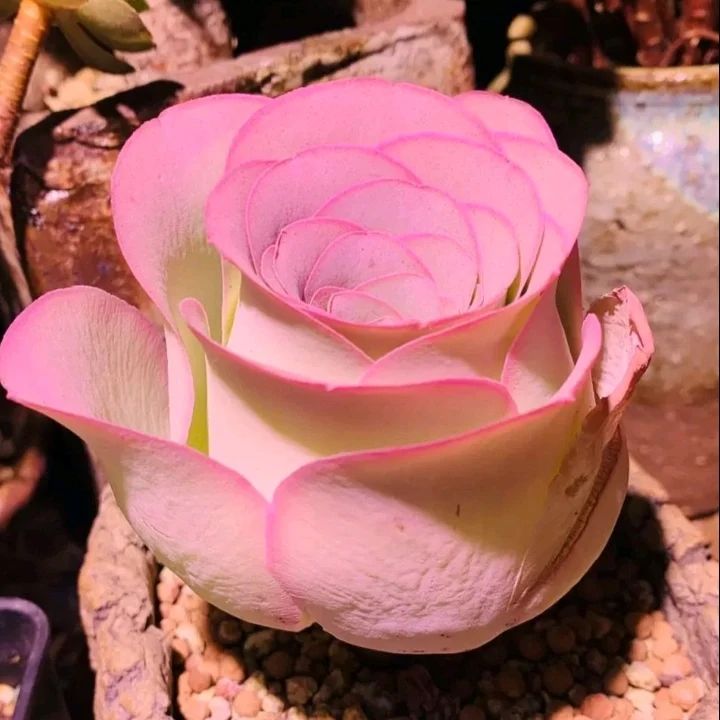 Greenovia dodentralis Pink Mountain, Pink greenovia dodrantalis (Source)
Greenovia dodentralis Pink Mountain, Pink greenovia dodrantalis (Source)
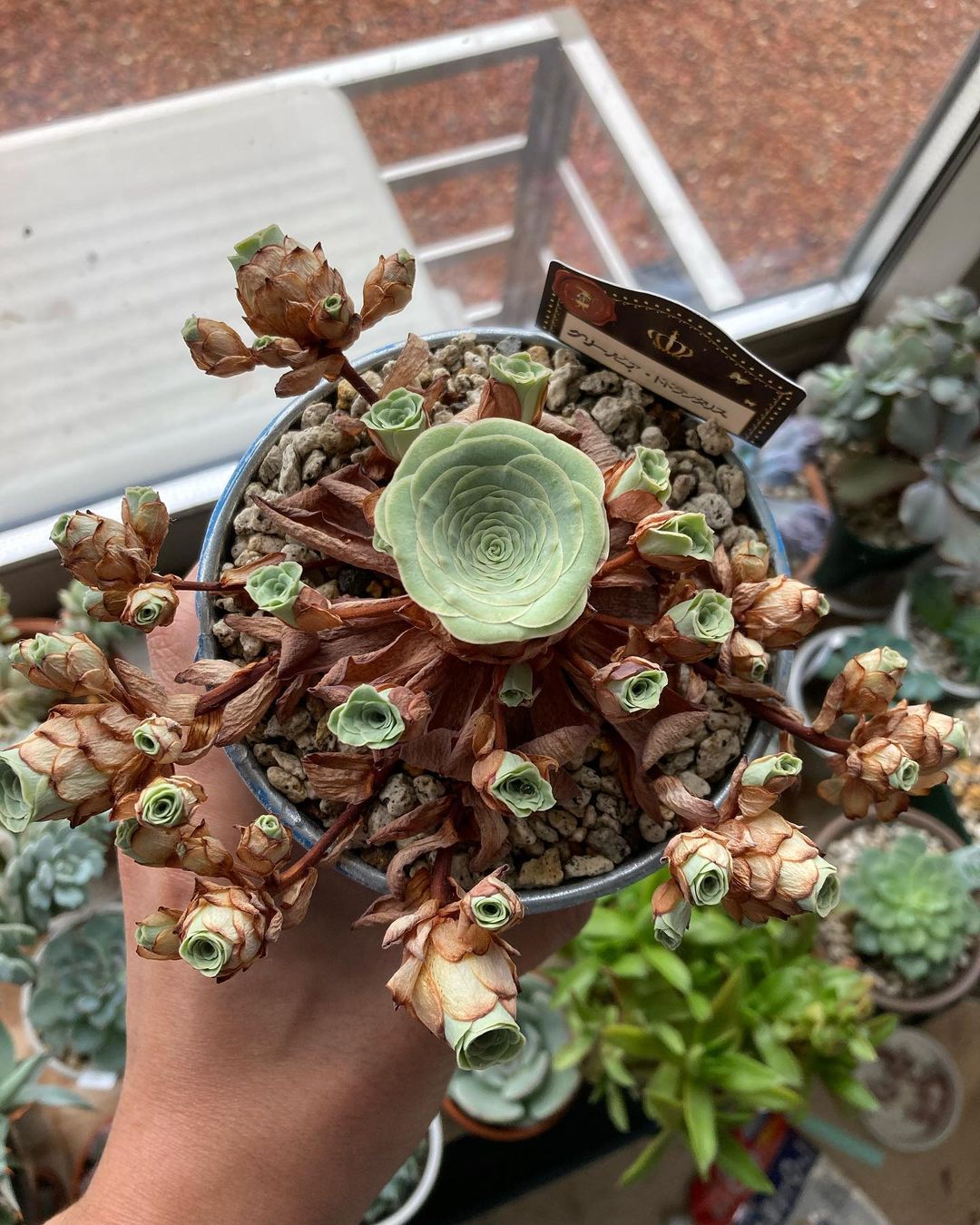 As the Greenovia matures, the older petals turn pink and begin to separate from the flower's body (Source)
As the Greenovia matures, the older petals turn pink and begin to separate from the flower's body (Source)
Flowers
The flowers of Greenovia dodrantalis are quite attractive and add to the overall appeal of the plant. They typically bloom in the spring and summer, although the exact timing may vary depending on the growing conditions.
The flowers of Greenovia dodrantalis are also quite popular with pollinators, including bees and butterflies. These insects are attracted to the flowers by their bright color and sweet fragrance, and they help to ensure the continuation of the species by transferring pollen from flower to flower.
 Flowers of Greenovia dodrantalis (Source)
Flowers of Greenovia dodrantalis (Source)
Size
Greenovia Dodrantalis is a small to medium-sized succulent that can grow up to 15-20 cm (6-8 inches) in height and 10-15 cm (4-6 inches) in diameter. It forms rosettes of soft, velvety leaves that resemble rose petals and can range in color from pale green to bluish-green. The rosettes can grow up to 10 cm (4 inches) in diameter and are usually flat or slightly domed in shape.
Care Guide For Greenovia
Greenovia is a beautiful and unique plant that can thrive with minimal care. By providing it with the right amount of sunlight, water, temperature, soil, air humidity, and occasional fertilization, you can enjoy the beauty of this stunning succulent for years to come. With proper care and attention, your Greenovia will reward you with its unique rosette-like appearance and delicate flowers.
Sunlight
One of the most important factors to consider when caring for Greenovia is sunlight. These plants need plenty of bright, indirect sunlight in order to thrive. Be sure to place your plant in a location that receives at least 6 hours of sunlight per day, preferably in a south or west-facing window. If your plant is not receiving enough light, you may notice that its leaves start to stretch or become pale in color.
Water
Greenovia is a succulent plant, which means that it is adapted to survive in arid conditions with little water. It's important to avoid overwatering your plant, as this can lead to root rot and other issues. Instead, water your Greenovia sparingly, allowing the soil to dry out completely between waterings. During the winter months, you may be able to reduce watering even further.
Temperature
Greenovia prefers warm temperatures, and it's important to keep it away from drafts or extreme temperature changes. Ideally, your plant should be kept in a location with temperatures between 60-85°F.
Soil
When it comes to soil, Greenovia prefers a well-draining mix that is rich in organic matter. You can use a commercial succulent potting mix, or you can create your own mix using equal parts sand, perlite, and peat moss.
Air Humidity
Greenovia is adapted to dry, arid conditions, and it does not require high levels of humidity. In fact, excessive humidity can be harmful to the plant, as it can increase the risk of fungal infections and other issues. Aim for a relative humidity level of 30-50% in the room where your Greenovia is located.
Fertilizing
Greenovia does not require frequent fertilization, but you can feed it once or twice a year with a balanced, water-soluble fertilizer. Be sure to dilute the fertilizer according to the instructions on the label, and only apply it during the plant's active growing season.
Repotting
Greenovia grows slowly, and it may only need to be repotted every few years. When repotting, be sure to use a pot that is only slightly larger than the current one, and be careful not to damage the plant's delicate roots.
Pruning
Greenovia does not require frequent pruning, but you may want to remove any dead or yellowing leaves as needed. Be sure to use clean, sharp scissors or pruning shears, and avoid damaging the healthy leaves or stem.
How to Propagate Greenovia
There are 4 ways propagate Greenovia Dodrantalis -
Leaf Propagation
To propagate the plant using leaves, carefully remove a healthy leaf from the mother plant. Make sure that there is no part left on the stem. Wait for a few days to allow the leaf to callous before replanting it in well-draining soil. Water the soil when it dries out.
Cutting Propagation
To propagate the plant from cuttings, carefully cut a leaf from the mother plant with a clean knife or scissors. Wait for a few days to allow it to callous before replanting it in well-draining soil. Water the soil when it dries out.
Offset Propagation
The plant propagates from offsets. To propagate from the mother plant, you may have to wait several years for the main plant to produce an offset. Use a sharp knife to remove an offset from the main plant, and clean the extra soil from it. Wait for a few days to allow it to callous before replanting it in well-draining soil. Water the soil when it dries out.
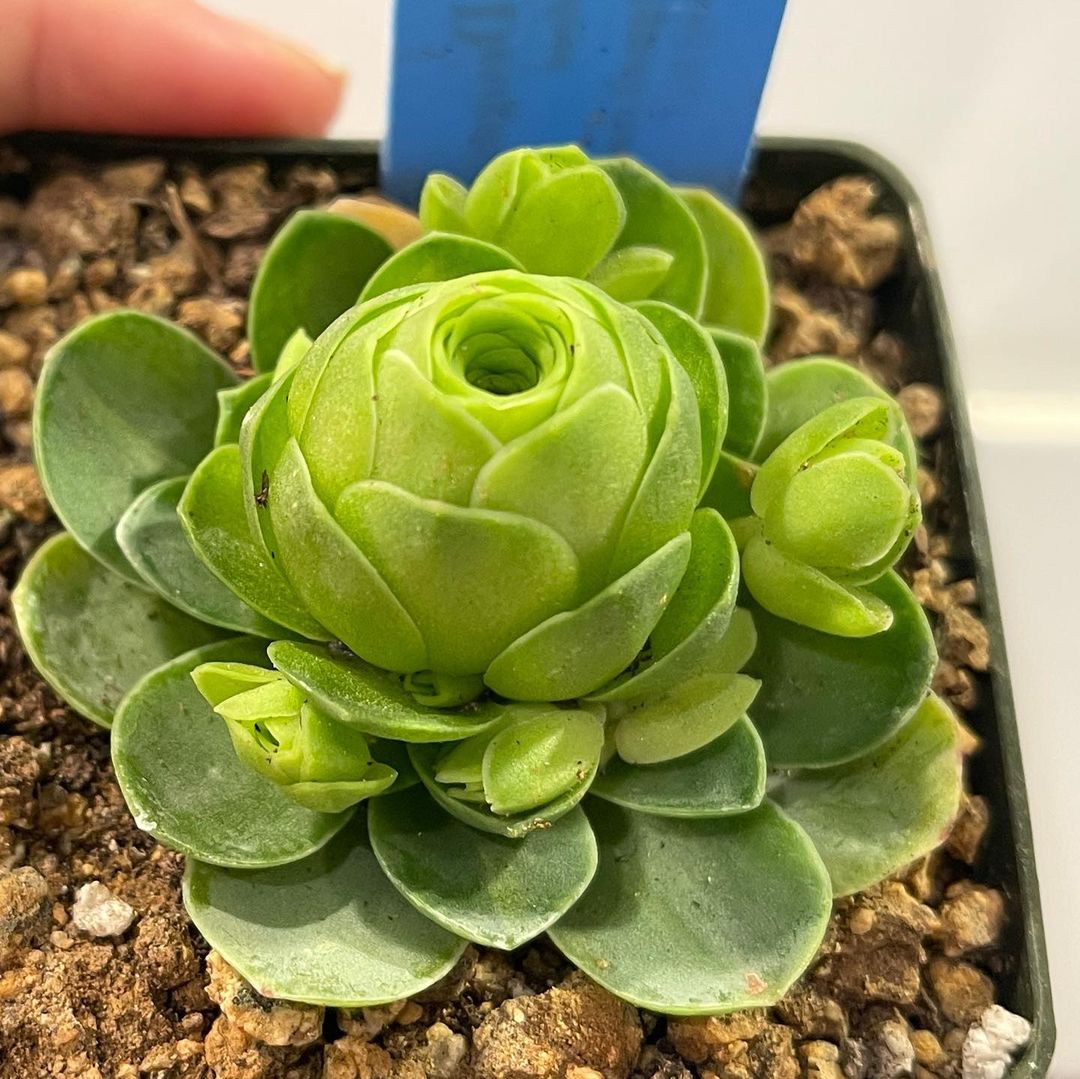 Greenovia with offsets (Source)
Greenovia with offsets (Source)
Seed Propagation
Although this succulent can be propagated by its seeds, it is a slow grower, so this method is not recommended. To propagate from the seeds, plant them in a well-draining soil mixture. This method can be used outdoors, but indoor propagating is recommended in cooler areas.
Is Greenovia toxic?
While Greenovia is generally safe and non-toxic, it's important to be aware of any potential risks that it may pose to humans and pets.
To Humans
It's worth noting that Greenovia dodrantalis is not known to be toxic to humans. The plant does not contain any known harmful chemicals or toxins that could cause harm if ingested or touched. However, as with any plant, it's important to practice good hygiene when handling Greenovia dodrantalis. Be sure to wash your hands thoroughly after touching the plant, and avoid touching your eyes or mouth before doing so.
To Pets
When it comes to pets, the situation is a bit more complex. While Greenovia dodrantalis is generally safe for most pets, it is possible that it could cause some mild digestive upset if ingested. The plant is not considered toxic to cats or dogs, but it is always a good idea to keep an eye on your pet if you suspect that they have ingested any part of the plant. If your pet shows any signs of illness, such as vomiting or diarrhea, be sure to contact your veterinarian right away.
It's also important to note that while Greenovia dodrantalis itself may not be toxic, the soil and potting mix that it is grown in could potentially pose a risk to pets. Some potting mixes may contain fertilizers or other chemicals that could be harmful if ingested. To prevent this, be sure to use a high-quality potting mix that is specifically designed for succulent plants, and keep your plants out of reach of curious pets.
Common Problems of Greenovia
While Greenovia is generally easy to care for, it is not immune to pests and diseases that can cause problems if not identified and treated early. In this article, we will discuss some of the most common problems that Greenovia can face and how to prevent or treat them.
Pests
There are several diseases that can affect Greenovia, including root rot, powdery mildew, and bacterial leaf spot. These diseases can cause the plant to wilt, turn yellow or brown, or develop spots on its leaves or stems. To prevent diseases, it's important to avoid overwatering your Greenovia and to provide it with good air circulation. You can also use fungicides to treat diseases if they occur.
Diseases
There are several diseases that can affect Greenovia, including root rot, powdery mildew, and bacterial leaf spot. These diseases can cause the plant to wilt, turn yellow or brown, or develop spots on its leaves or stems. To prevent diseases, it's important to avoid overwatering your Greenovia and to provide it with good air circulation. You can also use fungicides to treat diseases if they occur.
Root rot
Root rot is a common problem for Greenovia and is caused by overwatering or poor drainage. This disease can cause the plant's roots to rot, leading to wilting and death. To prevent root rot, it's important to allow the soil to dry out completely between waterings and to avoid letting water sit in the saucer or pot. If you suspect root rot, you can try removing the affected parts of the plant and repotting it in fresh, well-draining soil.
Powdery mildew
Powdery mildew is a fungal disease that can cause a white powdery coating to form on the plant's leaves and stems. This disease can be caused by high humidity or poor air circulation. To prevent powdery mildew, it's important to provide good air circulation around your Greenovia and to avoid getting water on the leaves. You can also use a fungicide to treat powdery mildew if it occurs.
Bacterial leaf spot
Bacterial leaf spot is a bacterial disease that can cause brown or black spots to form on the plant's leaves. This disease can be caused by overwatering or poor air circulation. To prevent bacterial leaf spot, it's important to avoid overwatering your Greenovia and to provide good air circulation around it. You can also use a bactericide to treat bacterial leaf spot if it occurs.
FAQ
How do you take care of Greenovia?
To take care of Greenovia, you need to provide it with the right amount of sunlight, water, temperature, soil, air humidity, and occasional fertilization. Greenovia requires plenty of bright, indirect sunlight and should be placed in a location that receives at least 6 hours of sunlight per day. Watering should be done sparingly, allowing the soil to dry out completely between waterings. Greenovia prefers warm temperatures and should be kept away from drafts or extreme temperature changes. Greenovia needs a well-draining soil mix that is rich in organic matter. The air humidity level should be maintained between 30-50% in the room where the plant is located. Fertilization should be done once or twice a year with a balanced, water-soluble fertilizer, and repotting is only needed every few years. Pruning is not required frequently, but you may want to remove any dead or yellowing leaves as needed.
How big does Greenovia dodrantalis get?
Greenovia dodrantalis is a small succulent plant that usually grows up to 6 inches in height and 8 inches in width. Its leaves are arranged in a rosette and can grow up to 2 inches long and 1 inch wide.
Is Greenovia mountain rose poisonous to cats?
Greenovia dodrantalis (mountain rose) is not considered toxic to cats or dogs.
However, if ingested, it could potentially cause some mild digestive upset. It is always a good idea to monitor your pets if you suspect that they have ingested any part of the plant and to contact your veterinarian if they show any signs of illness. Additionally, while the plant itself may not be toxic, the potting mix it is grown in could potentially pose a risk to pets if it contains fertilizers or other harmful chemicals.
Therefore, it is important to use a high-quality potting mix that is specifically designed for succulent plants and to keep your plants out of reach of curious pets.
Can you propagate Greenovia?
Greenovia Dodrantalis can be propagated through four methods: leaf propagation, cutting propagation, offset propagation, and seed propagation. Leaf propagation involves removing a healthy leaf from the mother plant and replanting it after a few days of callousing. Cutting propagation requires cutting a leaf from the mother plant and replanting it after callousing. Offset propagation involves removing an offset from the main plant and replanting it after callousing. Seed propagation is possible but slow-growing, and involves planting the seeds in a well-draining soil mixture. It is recommended to propagate Greenovia Dodrantalis indoors in cooler areas.
Need tools for succulent propagation and repotting? Here are my go-to tools: mini tool set (including syringe 💉, gloves 🧤, tweezers 🪤, dust blower 💨, tiny shovels 🛠️) and well-draining mix 🌱.How often should you water Greenovia?
Greenovia is a succulent plant that prefers dry conditions, so it's important not to overwater it. Water deeply but infrequently, allowing the soil to dry out completely before watering again. Depending on the climate and conditions, this may be every 2-3 weeks or even less frequently. It's important to monitor the soil moisture and adjust watering accordingly.

